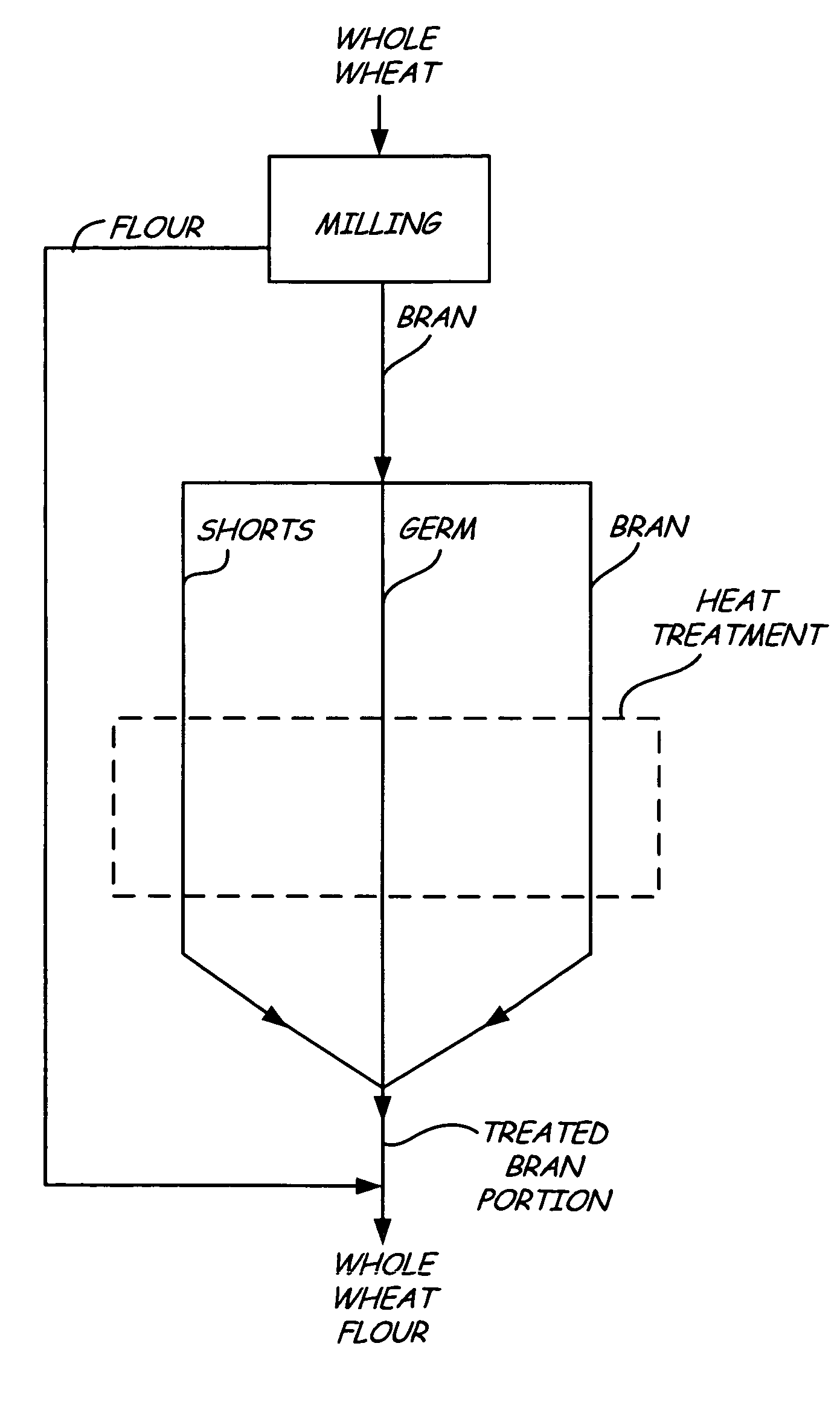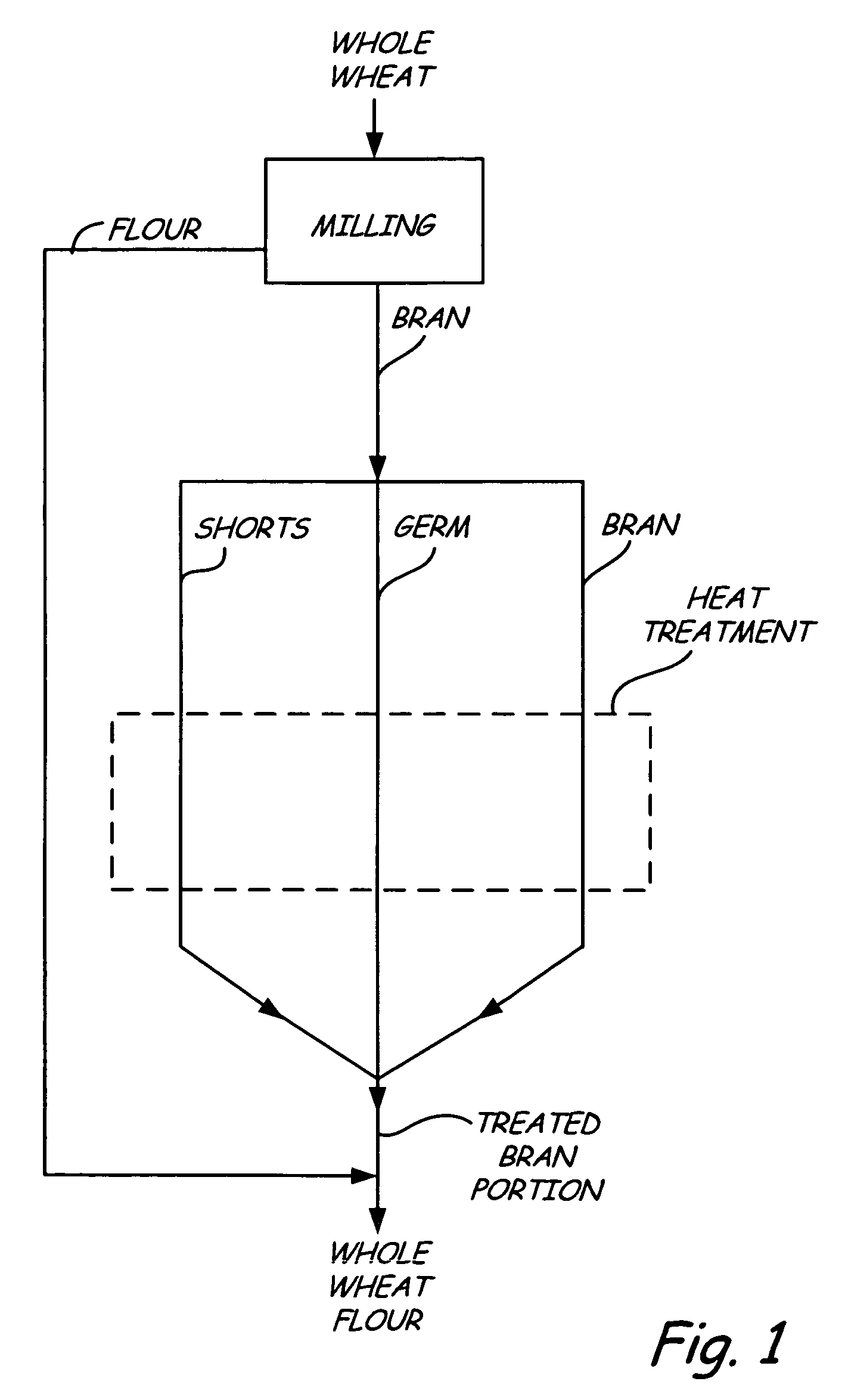Flour and dough compositions and related methods
a technology of composition and flour, applied in the field of processing methods, can solve the problems of difficult storage of whole-wheat flours, and difficult storage of dough products, so as to improve storage stability, reduce active enzyme content, and increase enzyme concentration
- Summary
- Abstract
- Description
- Claims
- Application Information
AI Technical Summary
Benefits of technology
Problems solved by technology
Method used
Image
Examples
example
Whole-Wheat Flour—Bran Heating
[0067]A general milling method to prepare whole-wheat flour includes first milling the wheat on the conventional mill, which produces streams of a flour portion (i.e., white flour containing mostly endosperm) and a bran portion containing fine bran, coarse bran, and shorts. The fine bran and coarse bran are ground on a hammermill. All streams are then combined to make a whole wheat flour. According to an exemplary method of the invention, we obtained separate amounts of the white flour and bran as prepared in making whole wheat flour as described. The fine bran and coarse bran had been ground on a hammermill. The bran was steamed in the kettle kiln (modified Groen kettle) as follows.
[0068]The bran was the combination of ground bran and shorts as used to make whole wheat flour described immediately above. It included all mill streams except the white flour. The relative amounts by weight were 24.9% bran and 75.1% of flour. The Groe...
PUM
 Login to View More
Login to View More Abstract
Description
Claims
Application Information
 Login to View More
Login to View More - R&D
- Intellectual Property
- Life Sciences
- Materials
- Tech Scout
- Unparalleled Data Quality
- Higher Quality Content
- 60% Fewer Hallucinations
Browse by: Latest US Patents, China's latest patents, Technical Efficacy Thesaurus, Application Domain, Technology Topic, Popular Technical Reports.
© 2025 PatSnap. All rights reserved.Legal|Privacy policy|Modern Slavery Act Transparency Statement|Sitemap|About US| Contact US: help@patsnap.com


